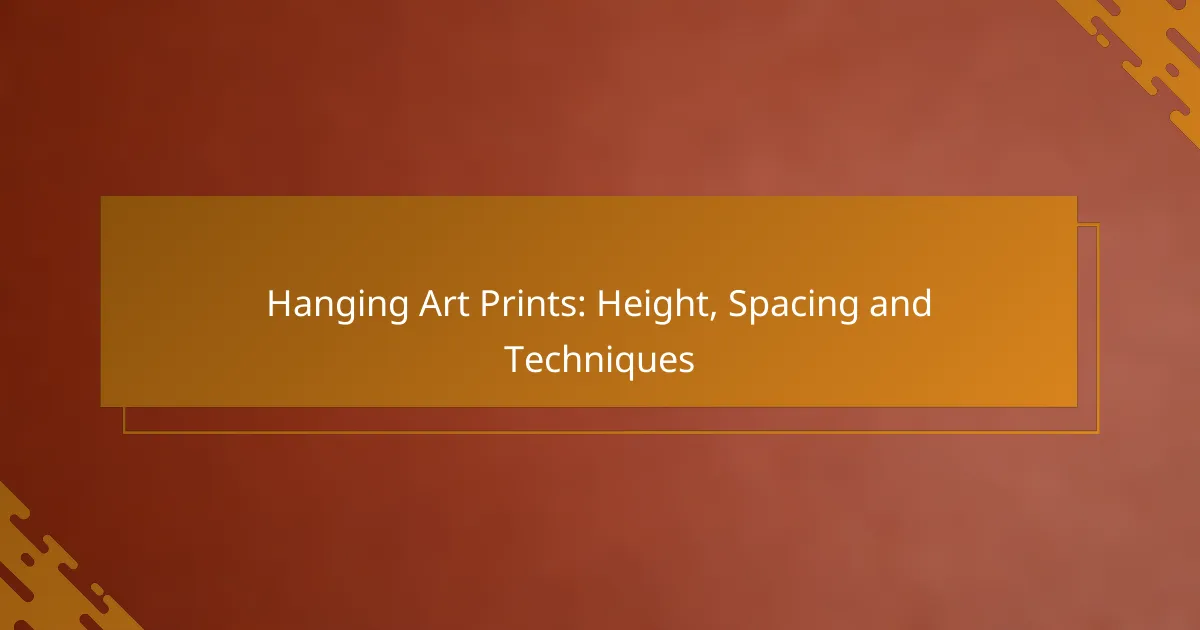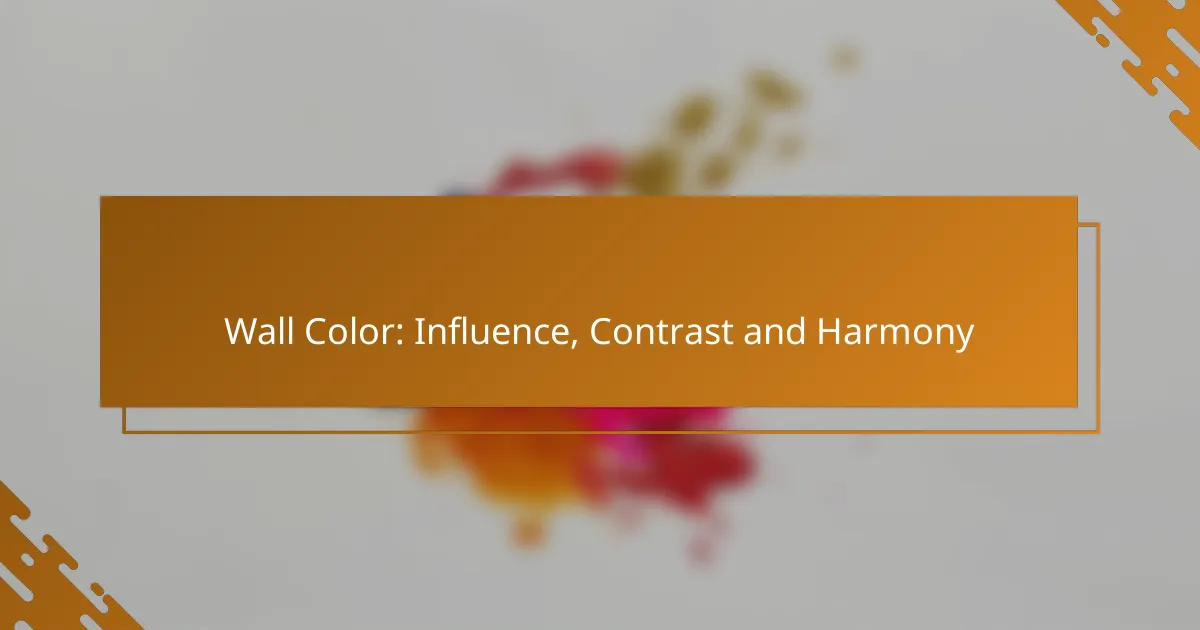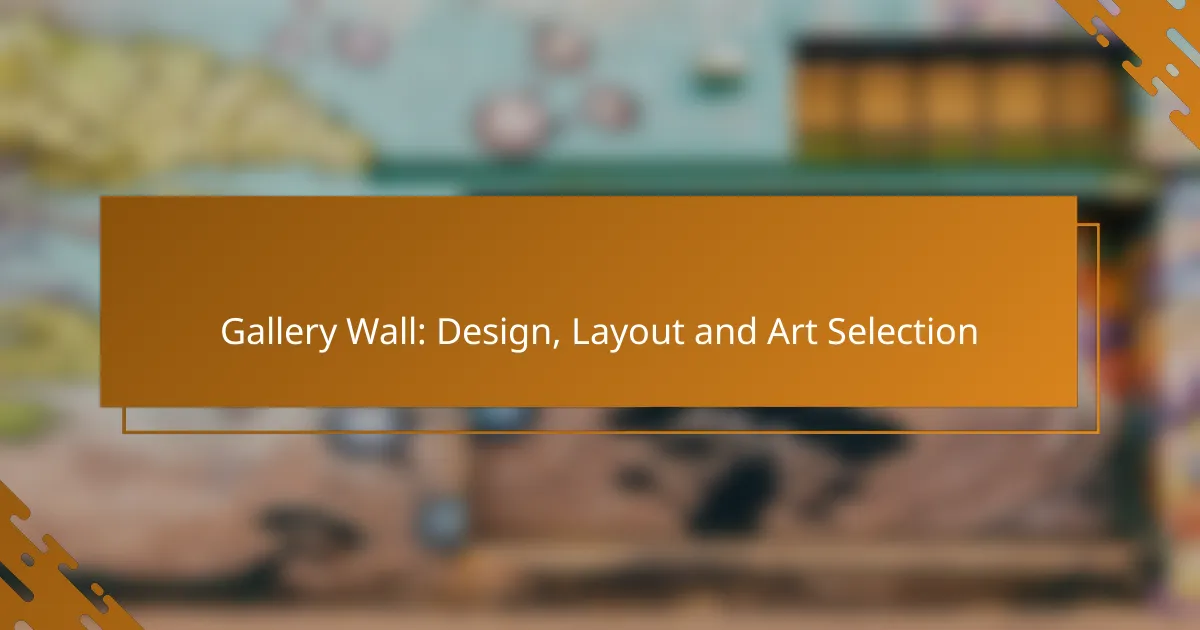Hanging art prints effectively enhances your space and showcases your style. For optimal viewing, aim to position the center of your artwork at a height of 57 to 60 inches from the floor, aligning with the average eye level. Additionally, maintain a spacing of 2 to 6 inches between prints to create a harmonious display while allowing each piece to shine. Employing techniques such as framing, layering, and strategic lighting can further elevate the visual impact of your art collection.

What is the ideal height for hanging art prints?
The ideal height for hanging art prints is generally around 57 to 60 inches from the floor to the center of the artwork. This height aligns with the average eye level of most viewers, ensuring that the art is easily appreciated without straining the neck or eyes.
Eye-level placement
Eye-level placement is crucial for maximizing the visual impact of art prints. Hanging artwork at eye level allows viewers to engage with the piece comfortably. For most people, this means positioning the center of the artwork approximately 57 to 60 inches from the ground.
To ensure proper eye-level placement, consider the average height of your audience. If the space is frequently used by children or seated individuals, adjust the height accordingly to maintain accessibility and enjoyment.
Standard height guidelines
Standard height guidelines suggest that the center of the artwork should be between 57 and 60 inches from the floor. This range is widely accepted in galleries and homes alike, providing a balanced viewing experience. When hanging multiple pieces, maintain this height for consistency.
For larger pieces or gallery walls, consider grouping artworks together, ensuring that the center of the arrangement stays within the 57 to 60-inch range. This creates a cohesive look while enhancing the overall aesthetic of the space.
Adjustments for different room types
Different room types may require adjustments to the standard height guidelines. In living rooms or dining areas, where people often stand or move around, maintaining the 57 to 60-inch height is ideal. However, in bedrooms or children’s rooms, you might lower the height slightly for comfort and accessibility.
In spaces with high ceilings, such as entryways or large halls, consider hanging larger artworks higher to fill the vertical space effectively. This can create a dramatic effect while still keeping the viewer’s comfort in mind.

How much spacing should be between art prints?
The ideal spacing between art prints typically ranges from 2 to 6 inches, depending on the overall layout and size of the prints. This spacing helps create a cohesive look while allowing each piece to stand out without feeling cramped.
Recommended spacing for gallery walls
For gallery walls, a spacing of 2 to 4 inches is generally recommended. This distance allows for a unified appearance while maintaining enough separation for each piece to be appreciated individually. If the prints are larger, consider increasing the spacing to 4 to 6 inches to avoid overwhelming the viewer.
When arranging a gallery wall, start by laying out the prints on the floor to visualize the spacing before committing to the wall. This method helps in adjusting distances and ensuring a balanced look.
Spacing for framed versus unframed prints
Framed prints often require slightly more spacing than unframed ones due to their added visual weight. A spacing of 3 to 5 inches is suitable for framed prints, while unframed prints can be spaced closer together, around 2 to 4 inches.
Consider the frame style as well; ornate frames may need more space to avoid a cluttered appearance, while sleek, minimal frames can be placed closer together for a modern look.
Considerations for large and small prints
When working with large prints, aim for wider spacing of 4 to 6 inches to allow the artwork to breathe and draw attention. In contrast, small prints can be grouped more closely, with spacing of 2 to 3 inches, to create a dynamic arrangement.
It’s essential to consider the wall space available and the overall design aesthetic. For a more eclectic look, mix sizes and adjust spacing accordingly, ensuring that the arrangement feels intentional rather than haphazard.

What techniques can enhance art print displays?
Several techniques can significantly enhance the display of art prints, making them more visually appealing and impactful. Key methods include using frames and mats, layering and overlapping prints, and incorporating lighting to create a dynamic effect.
Using frames and mats
Frames and mats serve both protective and aesthetic purposes for art prints. A well-chosen frame can complement the artwork, while mats can add depth and create a polished look. Consider using a mat that is at least two to four inches wide to provide a sufficient border around the print.
When selecting frames, opt for materials that match your decor style, such as wood for a rustic feel or metal for a modern touch. Ensure the frame size is appropriate for the print; a larger frame can make a small print feel lost, while a small frame might overwhelm a larger piece.
Layering and overlapping techniques
Layering and overlapping prints can create a more dynamic visual experience. This technique involves placing smaller prints in front of larger ones or arranging them in a staggered fashion. Aim for a cohesive color palette to maintain harmony among the pieces.
When layering, consider using a mix of frame styles and sizes to add interest. However, avoid overcrowding the display; leave some space between layers to allow each piece to stand out. A general rule is to keep gaps of at least two to three inches between overlapping prints.
Incorporating lighting for effect
Lighting can dramatically enhance the appearance of art prints, drawing attention and highlighting details. Use adjustable picture lights or track lighting to illuminate your artwork effectively. Aim for a light angle of about 30 degrees to minimize glare and shadows.
Consider the color temperature of the lighting; warmer tones (around 2700K to 3000K) can create a cozy atmosphere, while cooler tones (4000K to 5000K) can give a more modern feel. Be mindful of the intensity; too bright can wash out colors, while too dim may not showcase the art effectively.

What are the best tools for hanging art prints?
The best tools for hanging art prints include wall anchors, leveling tools, and measuring devices. These tools ensure that your artwork is securely mounted, properly aligned, and spaced according to your preferences.
Types of wall anchors
Wall anchors are essential for securely hanging art prints, especially on drywall or plaster. Common types include toggle bolts, plastic anchors, and screw-in anchors, each suited for different weights and wall materials. For heavier pieces, toggle bolts provide the most support, while plastic anchors work well for lighter items.
When choosing wall anchors, consider the weight of your art print and the type of wall you are working with. Always check the packaging for weight limits and installation instructions to ensure a secure fit.
Leveling tools
Leveling tools help ensure that your art prints are hung straight. A traditional spirit level or a laser level can be used to check that the top edge of your artwork is perfectly horizontal. Laser levels are particularly useful for aligning multiple pieces in a gallery wall setup.
To use a leveling tool, place it on top of the frame after hanging it. Adjust the artwork until the bubble is centered or the laser line is straight. This simple step prevents the frustration of crooked displays.
Measuring devices
Measuring devices, such as tape measures and rulers, are crucial for determining the correct height and spacing between art prints. A common guideline is to hang artwork at eye level, typically around 57 to 60 inches from the floor to the center of the piece.
When measuring for spacing, aim for 2 to 5 inches between pieces for a cohesive look. Using a measuring tape ensures that you maintain consistent distances, which contributes to a polished and professional appearance.

How to create a cohesive art display?
Creating a cohesive art display involves selecting pieces that harmonize in color, style, and size. A well-planned arrangement enhances the visual appeal of your space and reflects your personal taste.
Choosing a color palette
Start by selecting a color palette that ties your art pieces together. Consider using a dominant color that appears in multiple artworks, or choose complementary colors that enhance each other. Aim for a palette that includes a mix of neutral tones and a few bold accents to create visual interest.
When selecting colors, think about the mood you want to convey. For a calming atmosphere, opt for soft blues and greens, while vibrant reds and yellows can energize a space. Use color swatches to visualize how different pieces will interact on your wall.
Mixing different art styles can add depth and character to your display. Combine contemporary pieces with vintage art or abstract works with realism to create a dynamic arrangement. Ensure that the styles complement each other rather than clash.
To achieve balance, consider the visual weight of each piece. A large, bold painting can be paired with smaller, more delicate artworks to create a sense of harmony. Group pieces with similar themes or subjects to maintain a cohesive look.
Balancing sizes and shapes
Balancing sizes and shapes is crucial for a visually appealing art display. Use a mix of large, medium, and small pieces to create an engaging layout. A common approach is to arrange larger artworks at eye level, with smaller pieces surrounding them.
Consider using a grid or salon-style layout for a more structured look, or a freeform arrangement for a casual vibe. When hanging art, maintain consistent spacing—typically 2 to 5 inches apart—to ensure a unified appearance. Use painter’s tape to outline your arrangement on the wall before committing to nails or hooks.

What are common mistakes in hanging art prints?
Common mistakes in hanging art prints include improper height, inadequate spacing, and neglecting to consider the surrounding decor. These errors can detract from the overall aesthetic and impact the viewer’s experience.
Hanging art too high or too low
One of the most frequent mistakes is hanging art at an incorrect height. Ideally, the center of the artwork should be at eye level, which is typically around 57 to 60 inches from the floor. This ensures that the piece is easily viewed and appreciated.
When hanging multiple pieces, consider aligning their centers at the same height to create a cohesive look. If the art is too high, it can feel disconnected from the room; if too low, it may be overlooked.
Inconsistent spacing between pieces
Inconsistent spacing can disrupt the visual flow of a gallery wall. A common guideline is to maintain 2 to 5 inches between frames, depending on their size. This range allows for a balanced appearance without overcrowding.
When arranging multiple pieces, use a measuring tape to ensure uniform spacing. Avoid leaving large gaps that can make the arrangement feel disjointed or cluttered.
Ignoring the surrounding decor
Failing to consider the surrounding decor can lead to a mismatch in style and color. Art should complement the room’s design, so take into account the furniture, wall color, and overall theme. For instance, a modern piece may clash with traditional decor.
Before hanging, visualize how the art interacts with other elements in the space. This can help create a harmonious environment that enhances both the artwork and the room’s aesthetic.



